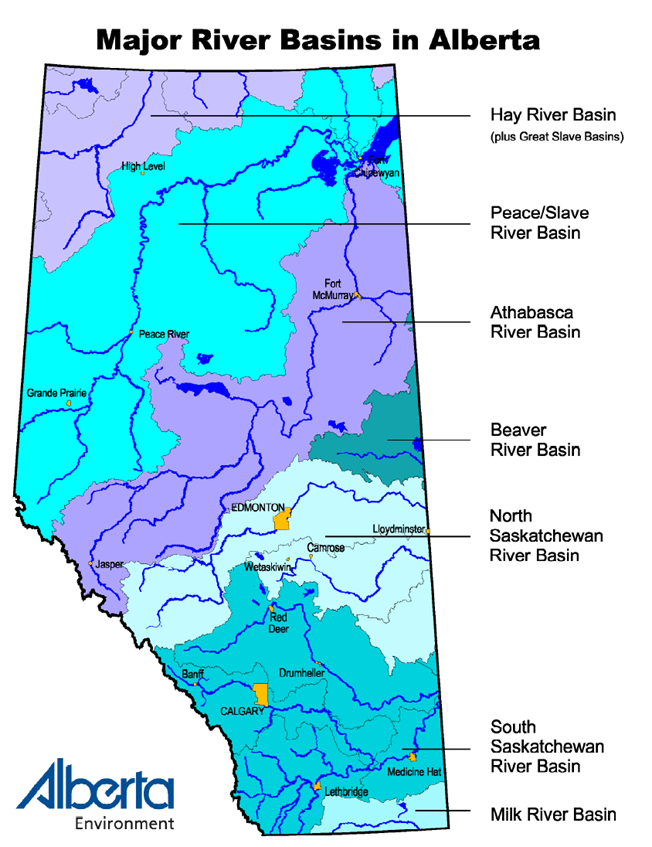Understanding Watersheds in Alberta: A summary guide
Alberta is home to a diverse and intricate network of watersheds, each with its own unique ecosystems, flora, and fauna. These vital natural resources play a crucial role in sustaining life, providing recreation opportunities, and supporting agriculture across the province. One of the most important ways that we can effectively manage our water is to consider the way we manage our land. Land use has many impacts on our watersheds, from encroachment of development on riparian areas and wetlands, to creation of impervious surfaces that cause stormwater issues, to environmentally damaging uses that leech contaminants into our groundwater. It is vitally important to combine land use management with watershed management to ensure that both our land and water are protected.
What is a Watershed?
A watershed is an area of land where all the water including rain, snowmelt, and surface runoff drains into a common outlet such as a creek, river, or lake. These interconnected systems are the lifeblood of the environment, shaping landscapes and influencing the distribution of plants and animals within the area. Each watershed has unique characteristics such as the total area of the watershed, its shape, the arrangements of slope, and the overall relief or elevation change. Other pieces of the area include the soil type ad composition, underlying geology, plant type and coverage, and land use patterns.
There are seven watersheds in Alberta that are represented by 11 watershed planning and advisory councils (WPAC). The objectives of the WPACs are to enhance and protect the water quality and environmental health generally through education and awareness of the stewardship opportunities available. Improving land management practices upstream can often improve water quality and availability downstream. As the physical boundaries of watersheds seldom align with political or administrative planning groups, a large part of watershed management involves balancing competing interests and resolving conflicts between upland and downstream users of the water.

The seven watersheds in the province are Hay River Basin, Peace/Slave River Basin, Athabasca River Basin, Beaver River Basin, North Saskatchewan River Basin, South Saskatchewan River Basin, Milk River Basin and are overseen by three partners, the Alberta Water Council, Watershed Planning and Advisory Councils, and Watershed Stewardship Groups. Watershed stewardship groups are community, volunteer-based partnerships actively involved in environmental stewardship including agricultural and industry organizations, municipalities, and other forms of local government. The Watershed Planning and Advisory Councils (WPAC) are independent nonprofit organizations designated by Alberta Environment to assess the condition of their watershed and prepare plans to address these issues. The key stakeholders in these WPAC including provincial, municipal, and federal government important industrial sectors, conservation groups, and aboriginal communities.
Raising awareness about the importance of watersheds in paramount. By educating others and advocating for responsible policies, we can ensure long-term health to these critical natural resources. The Alberta EFP helps producers identify potential actions that can be taken on farm to help preserve the integrity of watersheds. By understanding, appreciating, and actively working to protect them, we can ensure that future generations will have the opportunity to experience and benefit from these incredible ecosystems. Remember, every action, no matter how big or small, contributes to the larger effort of safeguarding Alberta’s watershed for the years to come.
 Initiative
Initiative